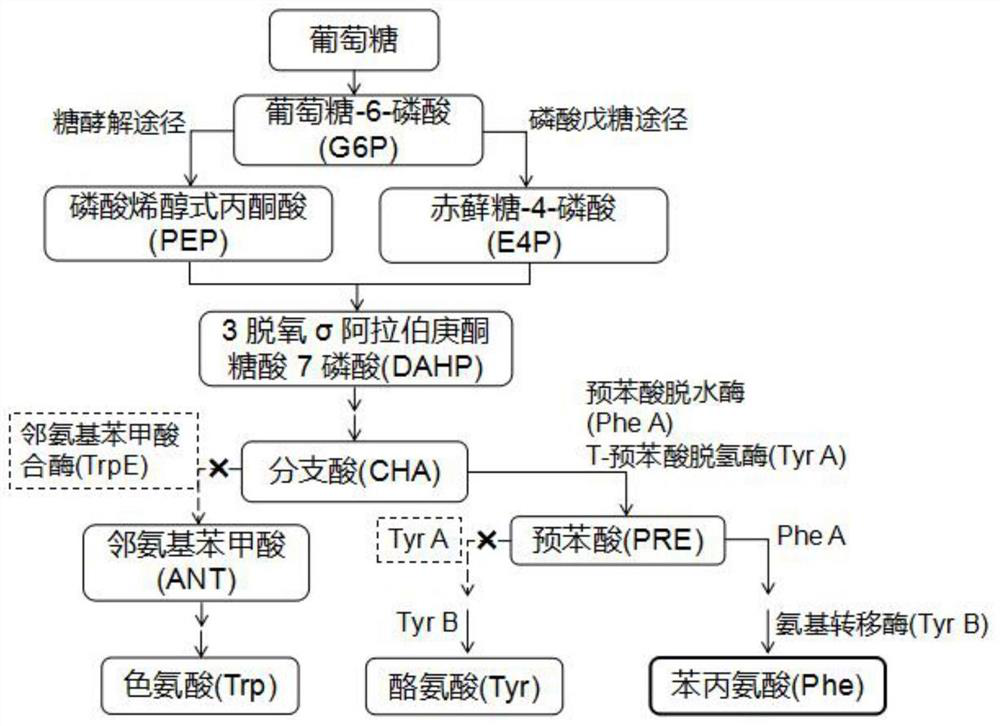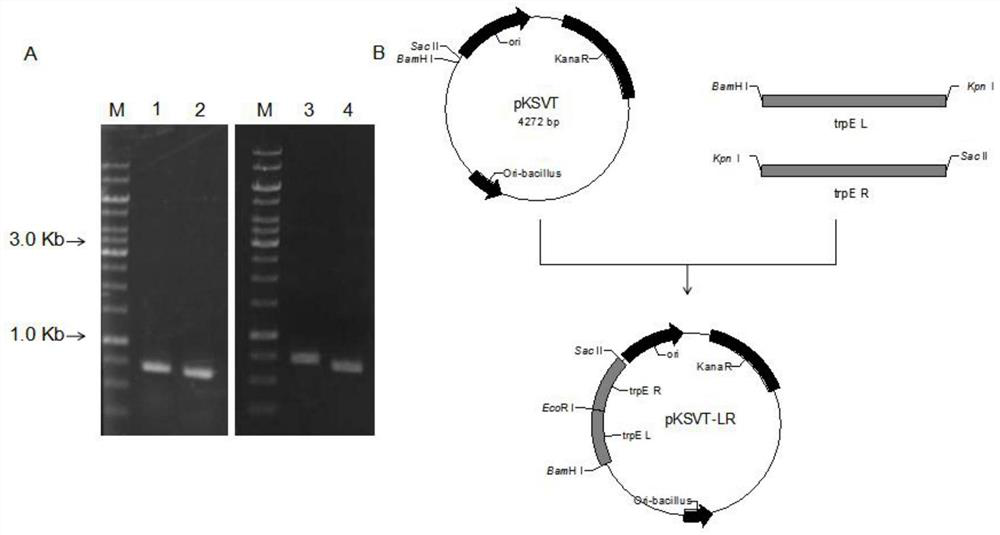Genetically engineered bacterium of Bacillus licheniformis with high yield of phenyllactic acid, method for producing phenyllactic acid and application
A technology of Bacillus licheniformis and genetically engineered bacteria, applied in the field of genes, can solve the problems of low price and profit value of target products, no patent publication documents have been found, and it is not suitable for large-scale industrial production, and achieves rich enzyme system and ability to resist extreme environments. Strong and productive effect
- Summary
- Abstract
- Description
- Claims
- Application Information
AI Technical Summary
Problems solved by technology
Method used
Image
Examples
Embodiment Construction
[0055] Below in conjunction with embodiment, the present invention is further described, and following embodiment is descriptive, not limiting, can not limit protection scope of the present invention with following embodiment.
[0056] The raw materials used in the present invention, if no special instructions, are conventional commercially available products, the methods used in the present invention, if no special instructions, are conventional methods in this area, and the quality of each material used in the present invention is routine use quality.
[0057] A high-yielding Bacillus licheniformis genetically engineered bacteria, the construction method of the genetically engineered bacteria is: transforming Bacillus licheniformis TCCC 11148 (2709) or Escherichia coli Rosetta (DE3) through genetic engineering and metabolic engineering technology, including Inhibiting the branching of chorismate to tryptophan pathway, inhibiting the branching of prephenate to tyrosine pathwa...
PUM
| Property | Measurement | Unit |
|---|---|---|
| wavelength | aaaaa | aaaaa |
Abstract
Description
Claims
Application Information
 Login to View More
Login to View More - R&D
- Intellectual Property
- Life Sciences
- Materials
- Tech Scout
- Unparalleled Data Quality
- Higher Quality Content
- 60% Fewer Hallucinations
Browse by: Latest US Patents, China's latest patents, Technical Efficacy Thesaurus, Application Domain, Technology Topic, Popular Technical Reports.
© 2025 PatSnap. All rights reserved.Legal|Privacy policy|Modern Slavery Act Transparency Statement|Sitemap|About US| Contact US: help@patsnap.com



